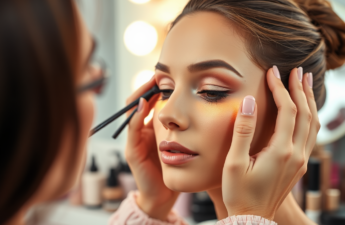Crafting a daily skincare routine can feel daunting, but unraveling its complexities leads to healthier, more radiant skin. In an age where environmental aggressors and inner stressors impact our skin’s condition, understanding the right order of application for your skincare products becomes pivotal. Moisturizer and sunscreen stand out as the heavy-hitters in this routine, both reducing signs of aging and shielding your skin from harmful UV rays. Yet, mastering their application sequence is just as essential as choosing quality products. Dive into this guide to learn why the order matters, and how to optimize your skincare regimen for maximum effectiveness.
With numerous products on the shelves touting miraculous benefits, skipping this step can lead to wasted time and money. But worry not! The goal of this article is to streamline your application process so that you can maximize every drop of your moisturizer without compromising on sun safety. The right combination applied in the correct order delivers benefits that compound each day, leading to visually significant improvements. Let’s explore the fundamentals of a daily skincare routine and the rationale behind each step.
Understanding the Importance of a Skincare Routine

A well-structured skincare regimen bolsters your skin’s natural defenses while maintaining its integrity. The climate, pollution, and daily stressors can weaken your skin barrier, leading to dryness, irritation, and premature aging. Without a consistent routine, these issues can escalate quickly, transforming into more significant skin conditions. Moreover, applying products haphazardly may diminish their effectiveness, ultimately resulting in dissatisfaction with your skincare regimen. Therefore, integrating an orderly approach where you know exactly when and how to apply each product is invaluable for both short-term results and long-term skin health.
The Basics of a Daily Skincare Routine

Understanding the fundamental components of an effective skincare routine is essential. Typically, this routine revolves around three main actions: cleansing, moisturizing, and sun protection. Each step plays a unique role and should not be overlooked or rushed. Let’s delve further into these three crucial functions and how they contribute to overall skin health.
Cleansing Your Skin
Proper cleansing sets the stage for effective treatment and hydration. Using a suitable cleanser tailored to your skin type is vital. For instance, oily skin may benefit from a foaming cleanser that helps control excess oil, while dry skin may thrive with a creamy, hydrating cleanser. Here’s a quick summary of cleanser types:
- Gel Cleansers: Great for oily or acne-prone skin.
- Cream Cleansers: Ideal for dry or sensitive skin.
- Foaming Cleansers: Effective for combination skin types.
The Role of Moisturizer
Moisturizers are not just optional luxuries; they play an indispensable role in maintaining skin hydration and barrier function. By sealing moisture into the skin, these products minimize water loss while providing essential nutrients. Choosing the correct moisturizer involves understanding your skin’s needs. For instance, if your skin is prone to acne, selecting a non-comedogenic product can prevent further breakouts.
The Correct Order of Application
Now that we’ve covered the basics, let’s discuss the order in which to apply your skincare products for optimal results. The traditional pattern focuses on starting light and finishing with thicker consistency, enabling proper absorption and protection. Here’s the recommended sequence:
| Step | Product |
|---|---|
| 1 | Cleansing |
| 2 | Serum |
| 3 | Moisturizer |
| 4 | Sunscreen |
After cleansing, a serum can be added to target specific concerns, such as fine lines or pigmentation. Next, apply your moisturizer to lock in hydration before finishing with sunscreen. This layering will ensure each product performs at its best, creating a robust defense against unwanted skin issues.
Applying moisturizer before sunscreen serves a specific purpose. It allows the skin to absorb nourishing components from the moisturizer while forming a barrier that sunscreen can adhere to more effectively. This sequence enhances your skin’s protective layers without compromising on moisture. Given that sunscreen acts as a shield against UV rays, it needs to be on top, functioning optimally to scatter and absorb harmful light. Achieving this delicate balance is crucial for looking your best.
Tips for Choosing the Right Products
Choosing the appropriate products is half the battle in establishing a successful skincare routine. Here are some key elements to consider when selecting your moisturizer and sunscreen:
- Know Your Skin Type: Oily, dry, sensitive, or combination skin could require different product formulations.
- Ingredient Awareness: Look for active ingredients that serve your specific skin concerns.
- SPF Rating: Choose a sunscreen with at least SPF 30 for effective UV protection.
Key Ingredients in Moisturizers
When perusing through moisturizer options, keep an eye out for effective ingredients. Some beneficial components include:
- Hyaluronic Acid: Known for its ability to retain moisture.
- Glycerin: Acts as a humectant, pulling moisture into the skin.
- Ceramides: Essential for restoring the skin barrier.
Understanding Sunscreen Formulations
Sunscreens typically come in two formulations: chemical and mineral. Understanding the differences can help you choose the best one for your skin type and lifestyle. Chemical sunscreens absorb UV rays and convert them into heat, while mineral sunscreens create a physical barrier against sun rays. Below is a comparison of these types:
| Type | Pros | Cons |
|---|---|---|
| Chemical | Lightweight, blends easily | May cause irritation for sensitive skin |
| Mineral | Gentle on skin, safe for sensitive types | Can leave a white cast |
Conclusion
A well-structured daily skincare routine is crucial for achieving and maintaining healthy, radiant skin. Understanding the correct order for applying moisturizer and sunscreen significantly enhances each product’s effectiveness, ultimately promoting better skin health. By following the practices articulated in this guide, you can master your skincare routine, ensuring that every product you use serves its purpose. As you commit to this regimen, you may find that not only does your skin improve in appearance but your confidence does as well.
Frequently Asked Questions
- Is it necessary to use both a moisturizer and sunscreen daily? Yes, using a moisturizer helps hydrate your skin while sunscreen protects against UV damage.
- Can I skip moisturizer if I have oily skin? It’s not advisable to skip moisturizer, even if you have oily skin. Look for lightweight, non-comedogenic options that won’t clog pores.
- What if my moisturizer has SPF? Do I still need to apply separate sunscreen? It’s recommended to use a dedicated sunscreen for optimal protection, even if your moisturizer contains SPF, as the coverage may be less effective.
- How long should I wait between applying moisturizer and sunscreen? It’s best to wait a few minutes between the application of moisturizer and sunscreen to allow the moisturizer to fully absorb.
- Can I use a face oil instead of a moisturizer? While face oils can provide hydration, they often don’t contain the beneficial ingredients found in moisturizers. Using both can be effective, but ensure the oil is applied after moisturizer if you’re layering.



